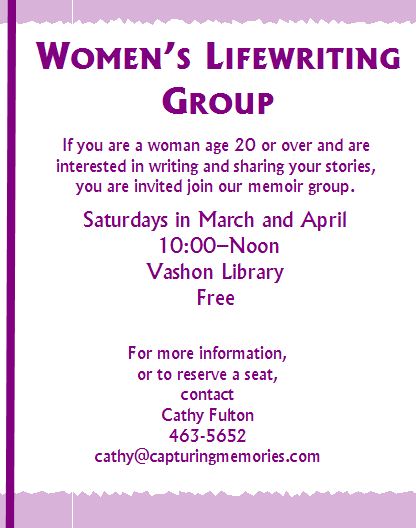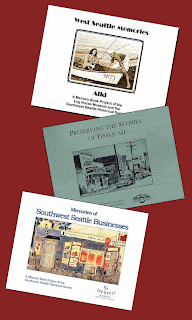 |
All the information in this post, and
many more details, can be found in the
95-page project director's guide,
Memory Book Projects, which can be
purchased in the Capturing Memories Store.
|
Step 1: Determine the theme and scope of your project.
If you are collecting stories for a widespread community or organization, it will be necessary to narrow the subject. In the first Memory Book project we worked on with the Long-Timers group of the Southwest Seattle Historical Society, we initially entitled the project “Memories of West Seattle.” Once stories started coming in, we realized that the scope of the project was too broad. Since we did not have the funds available to publish so much material, we narrowed the topic to only include the Alki neighborhood of West Seattle in the final publication. That was where the bulk of contributions came from. It was a difficult decision to make in the middle of the project, because we were concerned that some of the contributors who lived outside the Alki neighborhood would be offended. Fortunately, we were able to later utilize most of the omitted stories in a museum exhibit, 47 Voices Remember.You walk a fine line between too broad a topic and one that is too narrow. If you choose a limited subject with little potential, you will be scrambling to collect enough material to make a book possible. While you are considering topics, keep in mind the number of potential contributors. The more contributors you will have, the narrower your topic should be, and vice versa.
Step 2: Form a Memory Book steering committee.
The steering committee should be composed of people who are well acquainted with the community or organization and are highly motivated to see the project to a successful completion. Members should have knowledge of a wide range of community/organization members who can contribute valuable memoirs to the project. Tasks required of committee members include:- Develop funding sources/grant writing
- Compose workbook questions
- Handle publicity
- Recruit volunteers to transcribe, write captions to images, assist elders in completing their workbooks, editing and proofreading, etc.
- Coordinate participants: Locate potential participants; coordinate the dissemination of workbooks; send reminders to participants; retrieve workbooks
- Coordinate story selection and transcription
- Design/layout book or other end product, or work with book designer
Step 3: Determine the project budget and locate funding sources.
Before beginning any fundraising, it is important to have a good idea of what your project is going to cost. Include some contingency funds as well, in case your project outgrows your initial plans. In two Memory Book Projects we worked on, the number of stories and images that were collected far exceeded our original projection. The projects were almost too successful. Even after careful selection and editing, publication costs were more than we had planned. Fortunately, in both cases, contingency funds were available so that we were able to increase the number of published pages. It would have been disappointing to have eliminated some of the remarkable stories we collected just for lack of funds.
 |
| Exerpted from Memory Book Projects: Collecting Stories and Memorabilia |
Step 4: Set up the project schedule.
The time required to complete your project depends on a number of factors. The first is funding. If you are applying for a grant, you may have to begin planning a year or more before completion of the project, depending on the grantmaker’s schedule.
If it is important for the project be completed by a certain date (to coincide with an annual community celebration or reunion, for example), you should add at least an extra month to the schedule.
Don’t box yourself in. The last month of the project is the most intense. If any part of the schedule slips, you will need to move the publication date back—or plan to spend some very stressful late nights during the last two weeks of the project. Believe me, I speak from experience when I say that this is not the most fun way to celebrate the end of a wonderful Memory Book Project.
 |
| A truncated suggested schedule from Memory Book Projects: Collecting Stories and Memorabilia |
Step 6: Create a workbook for contributors to complete.
Step 7: Collect the stories and images.
Step 8: Create your Memory Book publication, exhibit, or other end product.
In the meantime, you can freely download the Table of Contents, Introduction, and Chapter 1 of Memory Book Projects, Collecting Stories and Memorabilia in the Capturing Memories Store.





